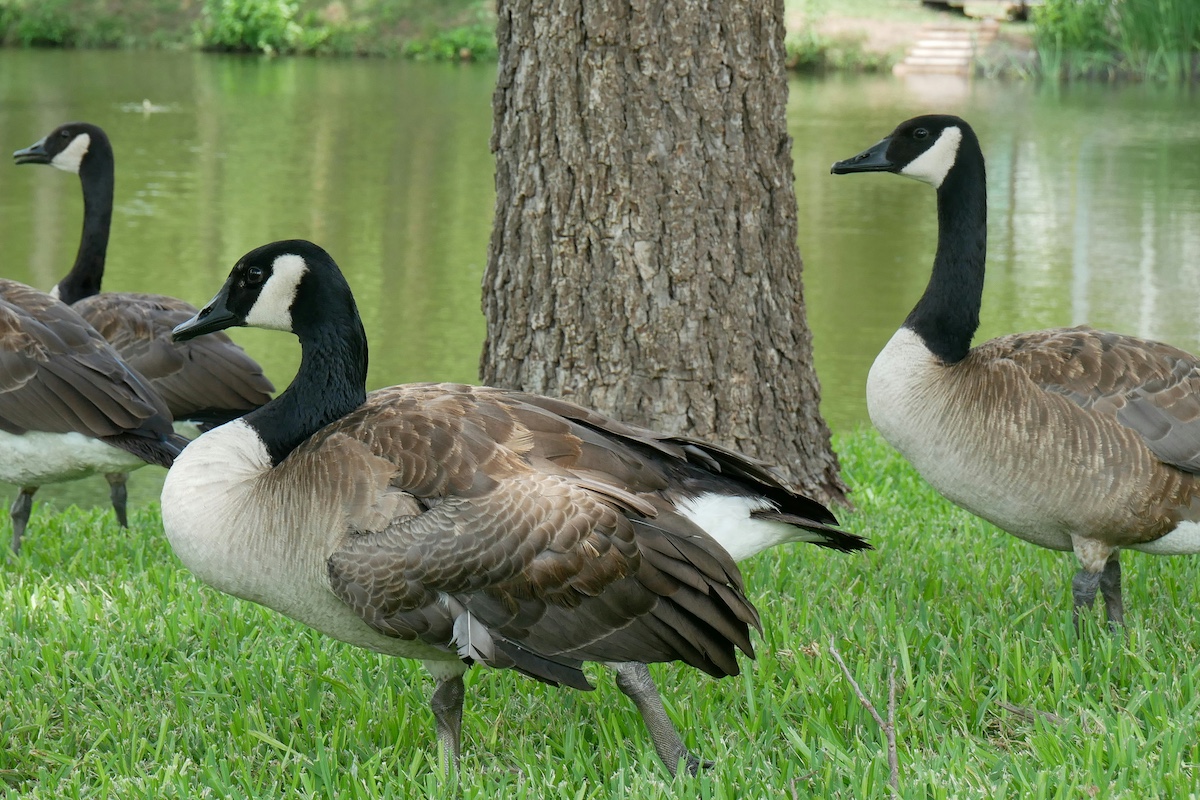
The story of the wild turkey is often cited as one of the greatest conservation success stories ever told. That is certainly the case in Illinois where, by the early part of the 20th century, the species was almost entirely extirpated. Like many state agencies across the country, the Illinois Department of Natural Resources (IDNR) utilized a successful and intensive trap and release program that saw populations reestablished in every county over the course of nearly 50 years. The National Wild Turkey Federation assisted restoration by coordinating efforts between states. How could we have ever guessed this uniquely American gamebird that is a posterchild for wildlife restoration would one day be considered a nuisance by some?

IDNR receives nuisance turkey calls year-round and from all over the state. Most of these reports are concentrated during spring and in suburban communities in and around metropolitan areas. Spring is wild turkey breeding season and a time when male turkeys are in pursuit of females and willing to put up a fight for them. Turkeys give up a little bit of their wariness at this time of the year and anything, or anyone, not considered a predation threat might be considered competition. Reports of problem birds vary widely. From merely following people around, to scratching up landscaping and chasing children as they get off a school bus.
So, what is the root of the problem? Did we do too good of a job with restoration efforts? Are turkeys overpopulated in Illinois? Ask many turkey hunters and they will tell you this is not the case. In fact, while most of the state has a stable population, there are areas where turkey numbers have declined over the last 15 years. How can turkey populations be stable to declining when more birds are being reported in urban areas? It’s a complex situation but much of it can be attributed to urban sprawl. Suburban areas with large trees can be suitable habitat for wild turkeys, especially if they are located near woodlands and/or agricultural fields. Most nuisance wild turkey cases are related to the availability of food near homes, however. Bird seed and pet food, and even leftover garden residue, will all attract turkeys to backyards. When they don’t experience predation or safety threats, they have no reason to leave.

Although people typically feed wildlife with good intentions, they are often doing more harm than good. Turkeys don’t need our help finding food, and when people feed turkeys they may be contributing to their demise. They can be extremely wary in the woods where threats of predation abound but toss some bird feed on the ground and the innate distrust for humans begins to wane—especially when the only attention they receive is adoring looks from the comfort of patio furniture. Wild turkeys that have associated humans with food have little need to fear them and individuals that show aggressive behavior often need to be euthanized. This is because the logistics in coordinating the trapping and relocating of a bird can be very difficult and, once relocated, they may fall right back into their old habits in a new location.
Removing food may not be the solution in every case, however. If an urban area contains other habitat requirements as well, turkeys will continue to scratch out an existence. The key to avoiding most conflicts with humans is to exclude turkeys where needed and illustrate that we are a threat whenever possible. Passive deterrents such as fencing, scarecrows and reflective devices can be enough to prevent some property damage. However, if a flock of turkeys is roosting on a property, the situation may require more aggressive measures. Spraying them with a hose or shoving them back with a broom can be extremely effective. There are even motion-sensor sprinklers and safe pyrotechnics which can deter even the most stubborn birds.

While wild turkeys in urban areas may be a relatively new phenomenon, there is little doubt they are here to stay. It may be alarming to see such large wild birds in neighborhoods, but if they can be prevented from accessing food, most nuisance issues will go away. Some conflict is inevitable, but many situations can be easily remedied with exclusion or hazing. Human safety is extremely important, however, so anyone who feels a wild turkey is a legitimate threat should not hesitate to contact their local IDNR district wildlife biologist.
Interested in learning more about the wild turkey, and reading about damage prevention and control measure? The Wildlife Illinois website is just the thing for you!
Luke Garver is the Wild Turkey Project Manager with the Illinois Department of Natural Resources, Division of Wildlife Resources.
















Submit a question for the author